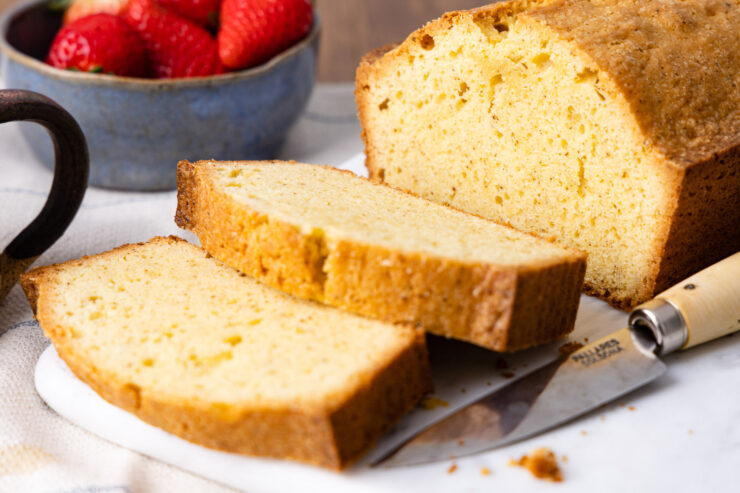
This brown butter pound cake is a variation of my quatre-quarts recipe with caramelly, toasty brown butter for a humble cake with rich flavor.
Brown Butter Pound Cake
Don’t get me wrong, sweetness is generally what categorizes a dessert as dessert, but what I crave in sweet treats is richness and flavor. I don’t seek out sugary desserts. What I’m looking for is butter and cream, nuttiness, or a developed, concentrated flavor. I don’t mean over-the-top techniques of Michelin-rated restaurants deconstructing and then reconstructing a strawberry either. I want a rustic, flavorful, rich dessert.
This brown butter pound cake is a variation of my quatre-quarts (French pound cake) recipe. It uses a simple, quick technique for a high-flavor reward. Instead of using regular butter (which there’s nothing wrong with), this cake relies on caramelly, concentrated, toasty brown butter for unassuming but intense flavor.
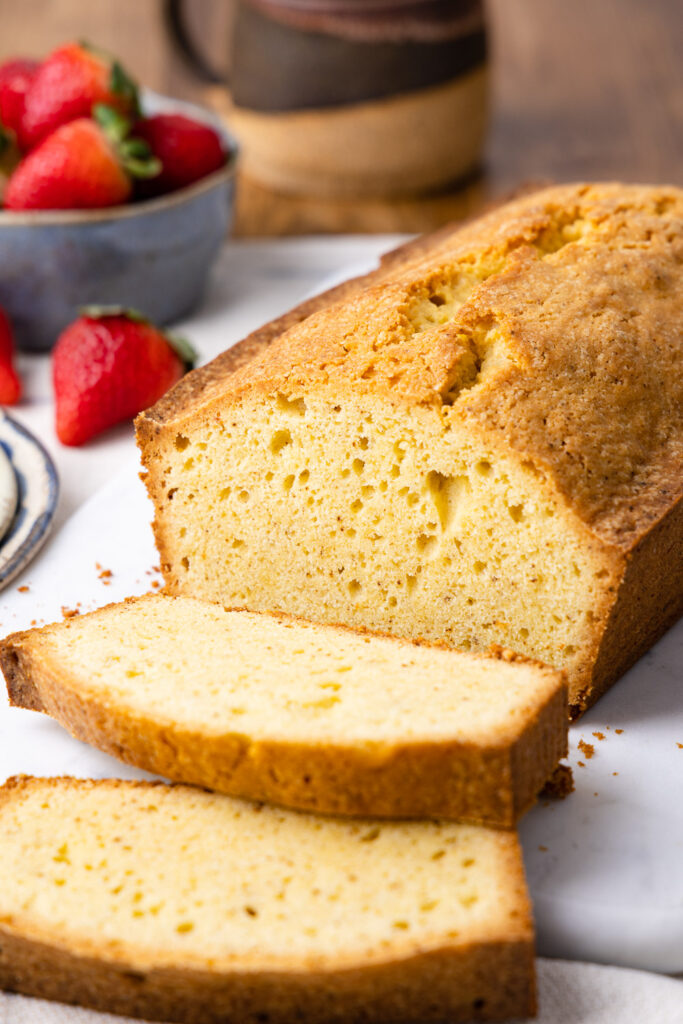
What is Brown Butter?
Brown butter is butter that’s not just melted but cooked longer to evaporate the water and toast the milk solids for an irresistible nutty aroma.
To make brown butter, heat the butter over medium-low heat in a light-colored saucepan. Low heat is key. Browned butter can quickly turn from golden to burnt and bitter. Using a light-colored saucepan makes it easier for you to gauge the color as it starts to brown.
At first, the butter will boil, evaporating most of the water. This concentrates the butterfat. Then, the butterfat toasts the milk solids, initiating the Maillard reaction (a major flavor-enhancing process that caramelizes fats and sugars). When the milk solids are golden brown and fragrant, take the pan off the heat and let it cool.
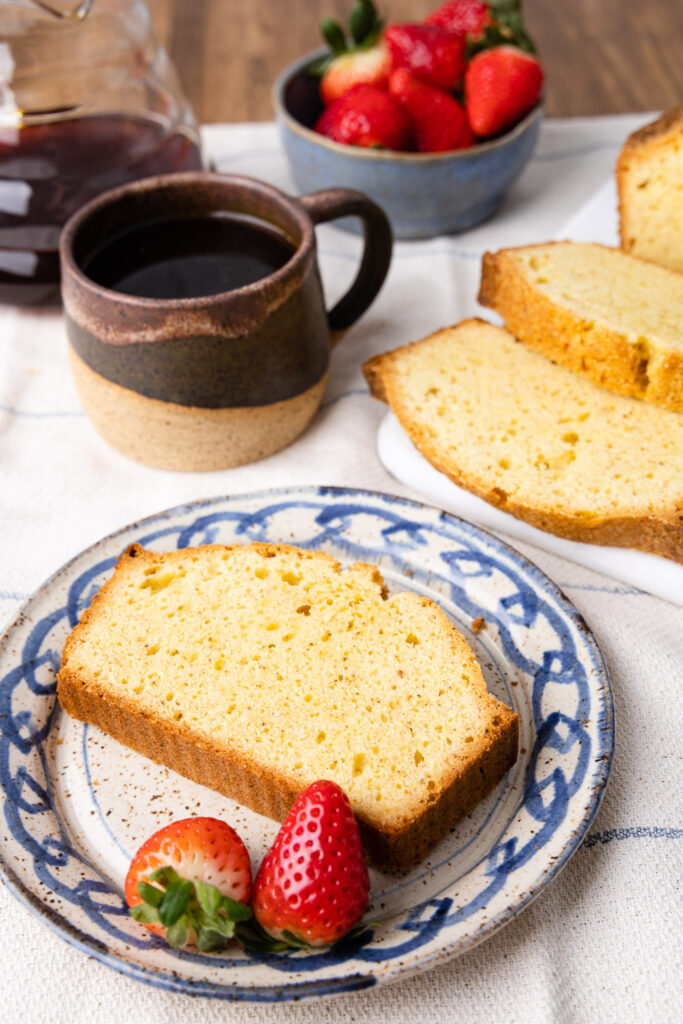
What You’ll Need to Make Brown Butter Pound Cake
Pound cake is a humble dessert that only relies on pantry staples. If you can, splurge for a high-quality, European-style butter for the best flavor. Here’s what you’ll need:
- Butter – This is the main flavor component for the cake, so use high-quality butter. I prefer unsalted, European-style butter or butter with at least 82% butterfat.
- Cake flour – cake flour has a lower gluten content and is ground finer than all-purpose flour. Pound cakes are known for being dense, and cake flour will lighten it slightly for a more tender crumb.
- Salt – even in sweet recipes, salt is an essential flavor enhancer.
- Baking powder – Pound cakes traditionally didn’t have leaveners because they were first made before the invention of chemical leavening agents. But now they contribute to the rise and tenderness of the cake.
- Eggs – Use large eggs. Separating and beating the whites and yolks separately incorporates more air into the batter for extra lift and tenderness.
- Sugar – Use granulated or caster sugar.
- Vanilla extract – vanilla pairs incredibly well with nutty brown butter.
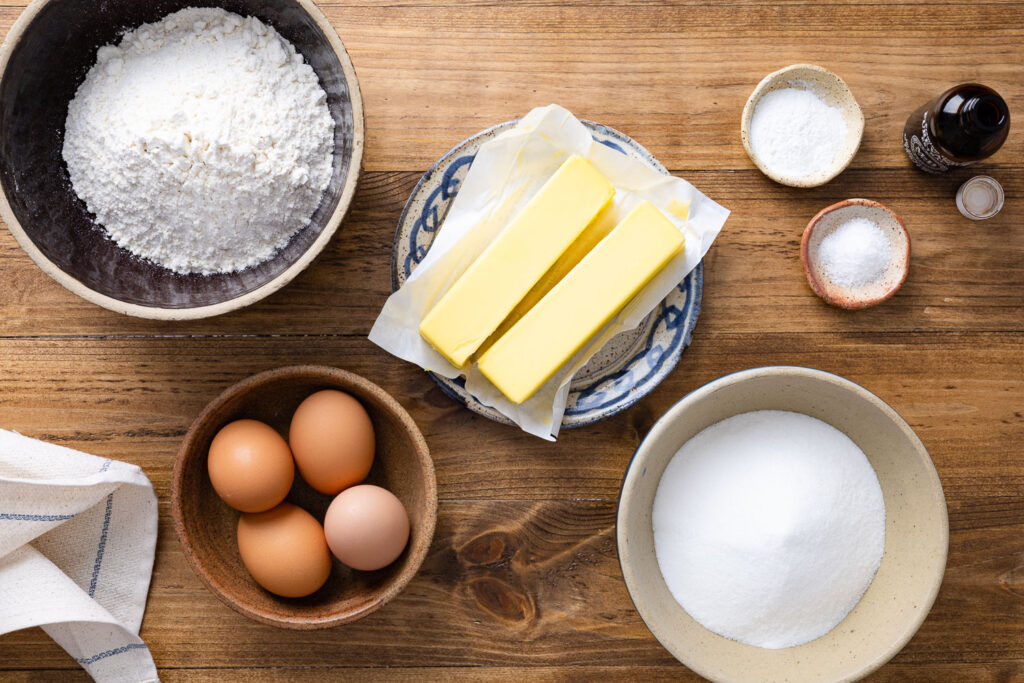
How to Serve Brown Butter Pound Cake
Brown butter pound cake is good enough to serve on its own with your afternoon coffee or tea. But no one is stopping you from adding toppings. The nutty, buttery cake works well with fresh fruit like strawberries or sliced bananas, creamy toppings like whipped cream or vanilla ice cream, or a smear of tart lemon curd.

How to Store
Once cooled, store the cake in an airtight container on the counter. It will keep for 4 to 5 days.
Freeze pound cake for up to 3 months. Thaw it, still wrapped, at room temperature.
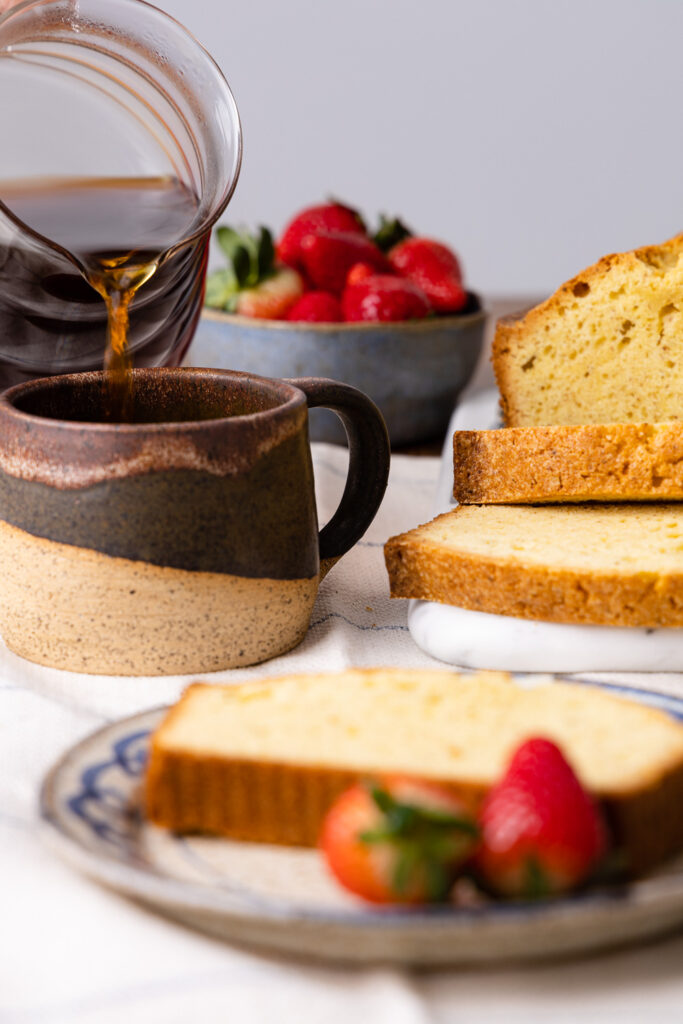
Brown Butter Pound Cake
Yields 1 loaf cake.
Prep time: 30 minutes
Cook time: 55 minutes
Total time: 1 hour 25 minutes
Ingredients:
210g cake flour
3/4 teaspoon kosher salt
1/2 teaspoon baking powder
4 large eggs, separated
200g granulated sugar, divided
2 teaspoons vanilla extract
1 3/4 cups cake flour
3/4 teaspoon kosher salt
1/2 teaspoon baking powder
4 large eggs, separated
1 cup granulated sugar, divided
2 teaspoons vanilla extract
1. Preheat the oven:
Preheat the oven to 180°C (350°F).
2. Prepare the pan:
Grease an 8 1/2 x 4 1/2 in. (22 x 11 cm) loaf pan with butter and dust with flour.
3. Brown the butter:
In a medium, heavy-bottomed saucepan, melt the butter over medium heat. Using a light-colored saucepan will help you gauge the color of the butter as it browns. Once the butter melts, swirl the pan occasionally to brown evenly. As soon as the milk solids at the bottom of the pan turn a deep golden brown, take the pan off the heat to cool slightly.
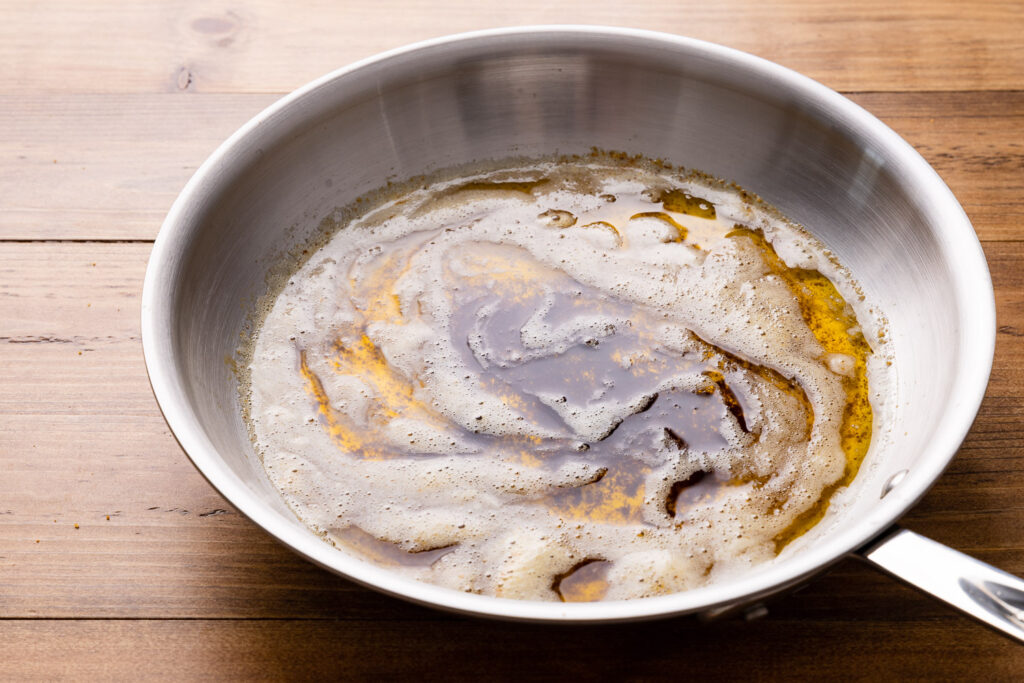
4. Mix the dry ingredients:
Whisk together the cake flour, salt, and baking powder in a medium mixing bowl.
5. Whip the yolks:
In the bowl of a stand mixer with the whisk attachment, or a large bowl with a hand mixer, beat the egg yolks and 100g (1/2 cup) of the sugar until the mixture becomes pale and light. When you lift the whisk out of the bowl, you should be able to make a figure-eight in the batter without it breaking. Transfer the whipped yolks into a clean mixing bowl.
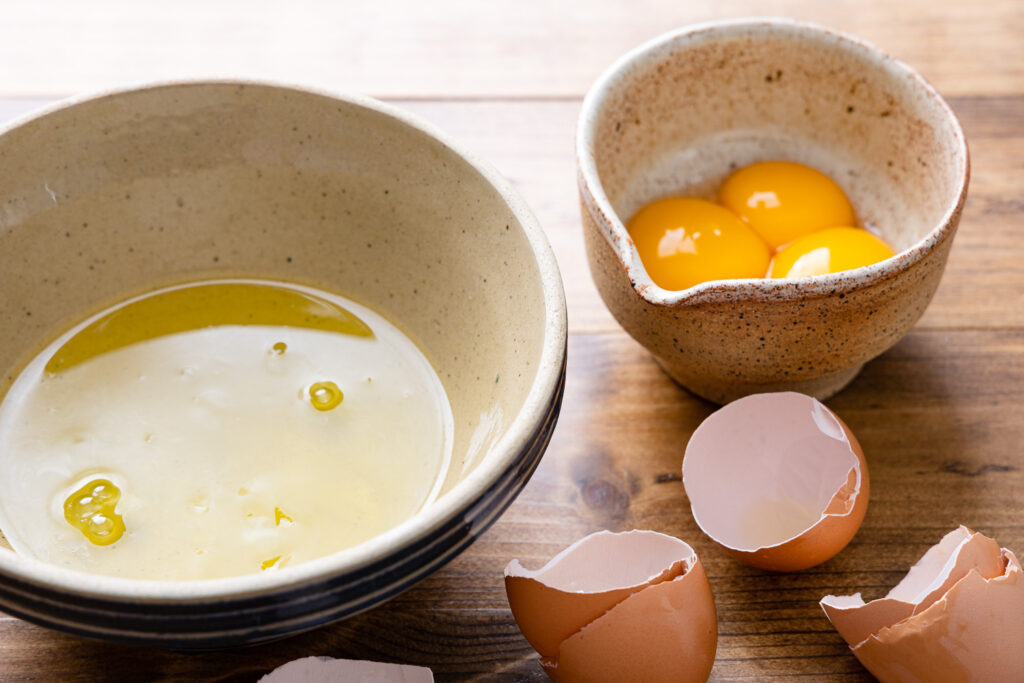
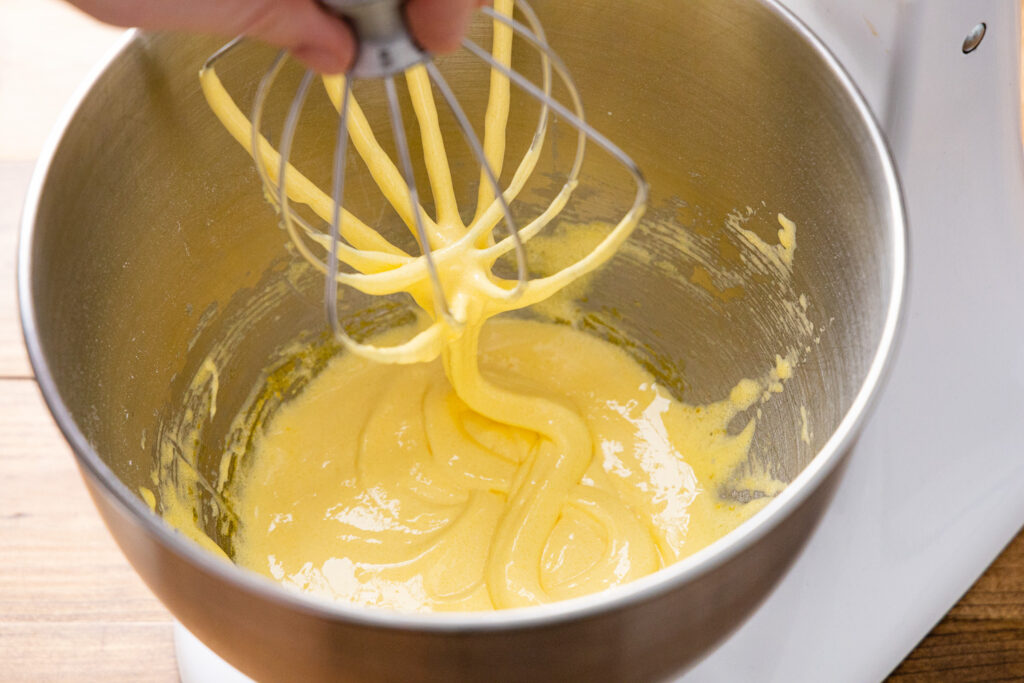
6. Whip the egg whites:
Clean and dry the stand mixer bowl. Add the egg whites and the remaining sugar, and beat until medium peaks form, about 4 minutes. Start testing after 2 minutes to be careful not to over-beat. You know the mixture is done when a peak holds and then curls over like the top of a soft serve ice cream.
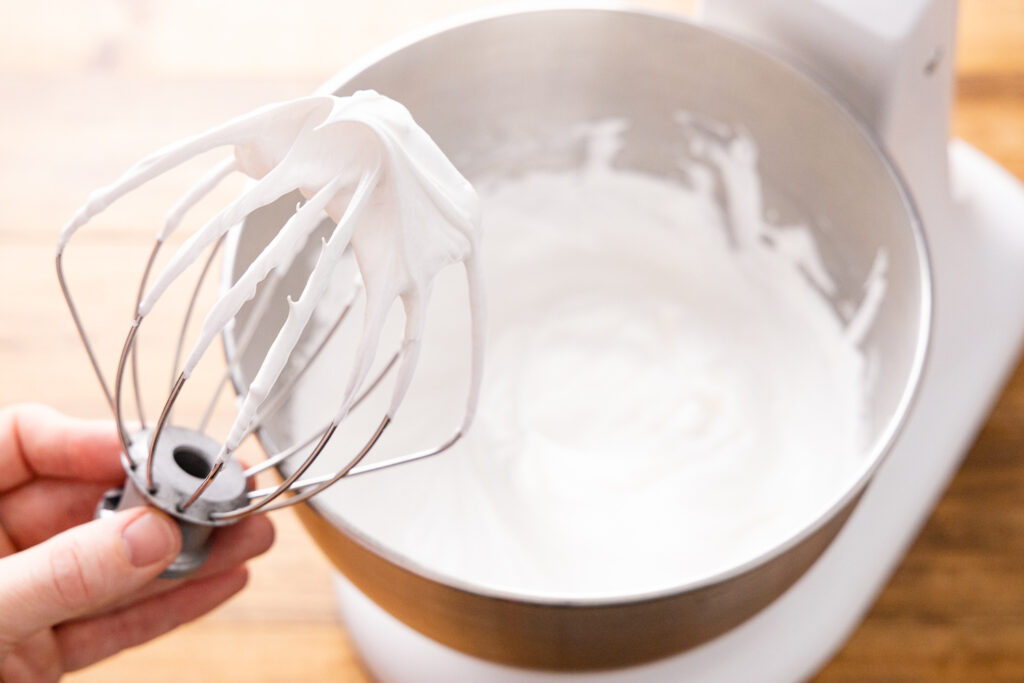
7. Mix the yolks and butter:
Slowly add the cooled brown butter to the whipped egg yolks while gently folding the butter in with a spatula. Work slowly and gently to keep the emulsion. Stir in the vanilla extract. Funnily, it’s similar to hollandaise sauce at this point. While maintaining the emulsion is ideal, don’t worry too much if it breaks, it will come back together when adding the rest of the ingredients.
8. Add the flour
Once the butter is completely incorporated, add the dry ingredients and gently fold the mixture with a spatula until just combined.
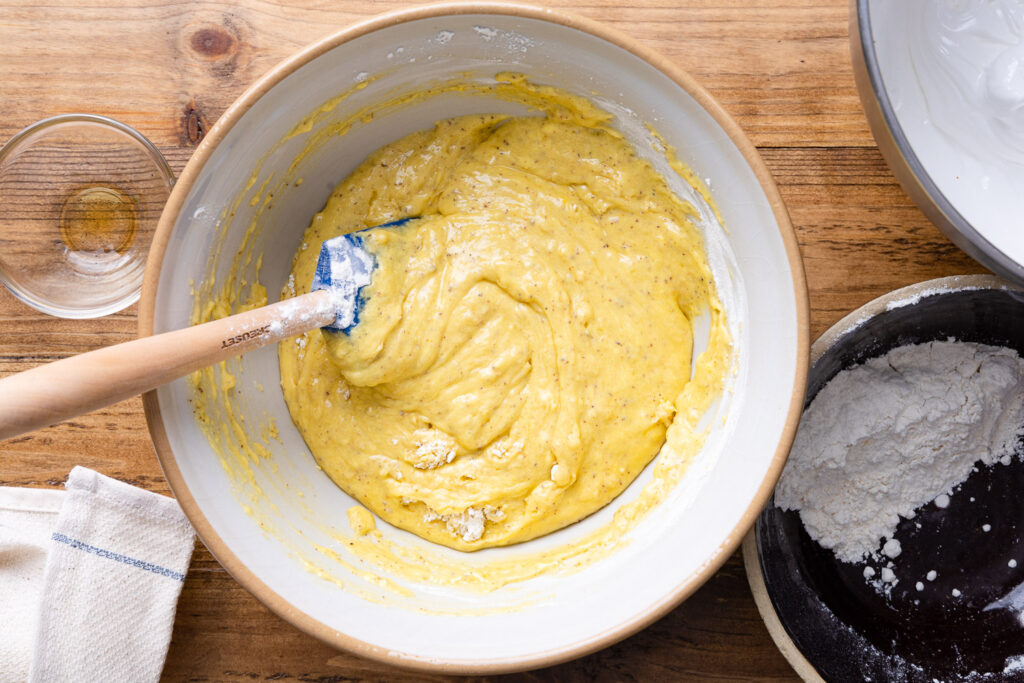
9. Fold in the egg whites:
Add the egg whites to the batter, folding very gently until just combined and no streaks of egg whites remain.
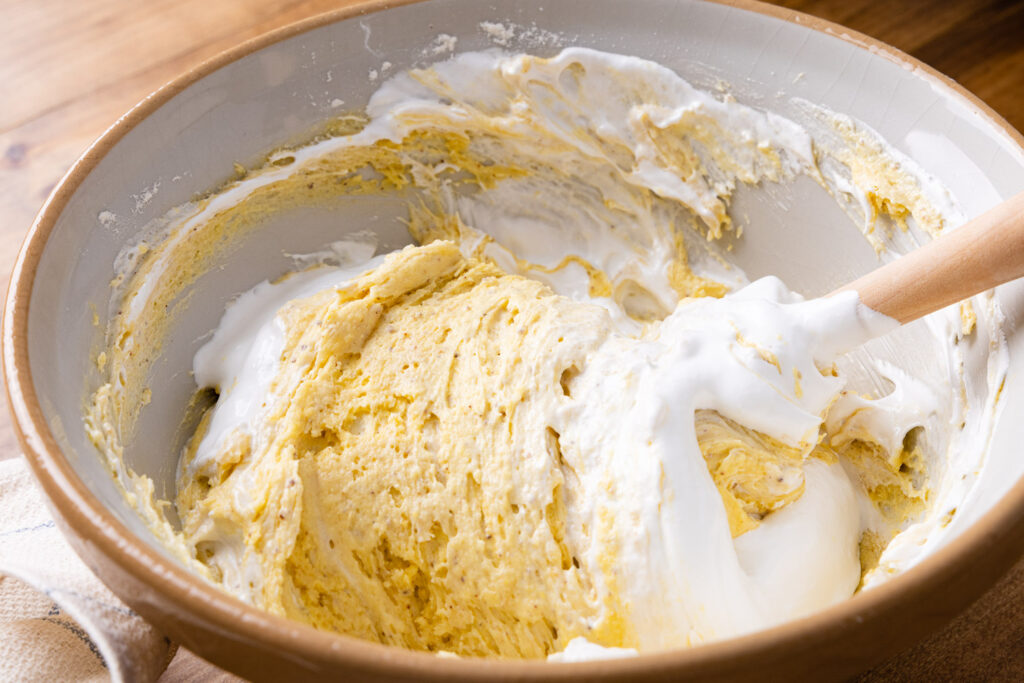
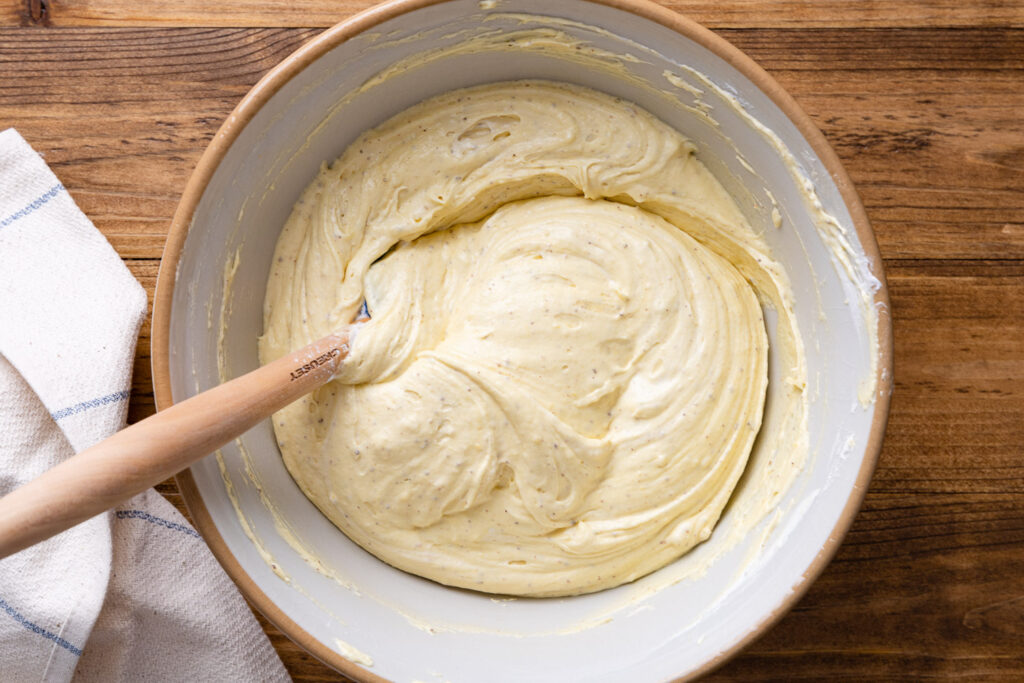
10. Bake the cake:
Pour the batter into the prepared pan and bake at 180°C for about 55 minutes. The cake is done when a toothpick inserted in the middle comes out clean.
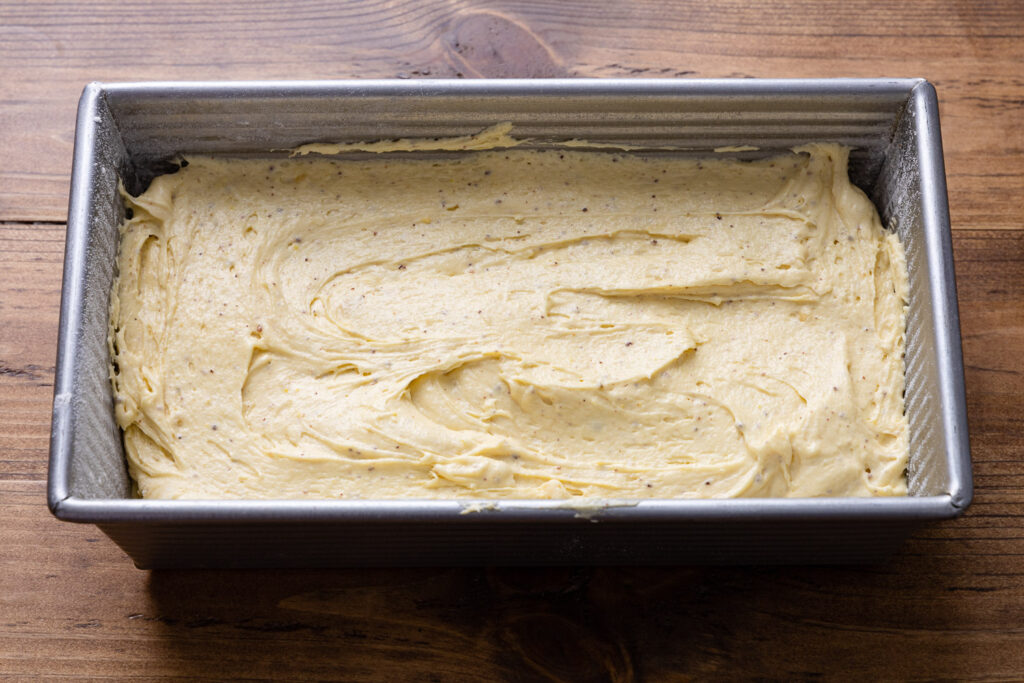
11. Cool:
Cool for at least 20 minutes before removing the cake from the pan onto a wire rack. Let the cake cool completely before slicing and serving.
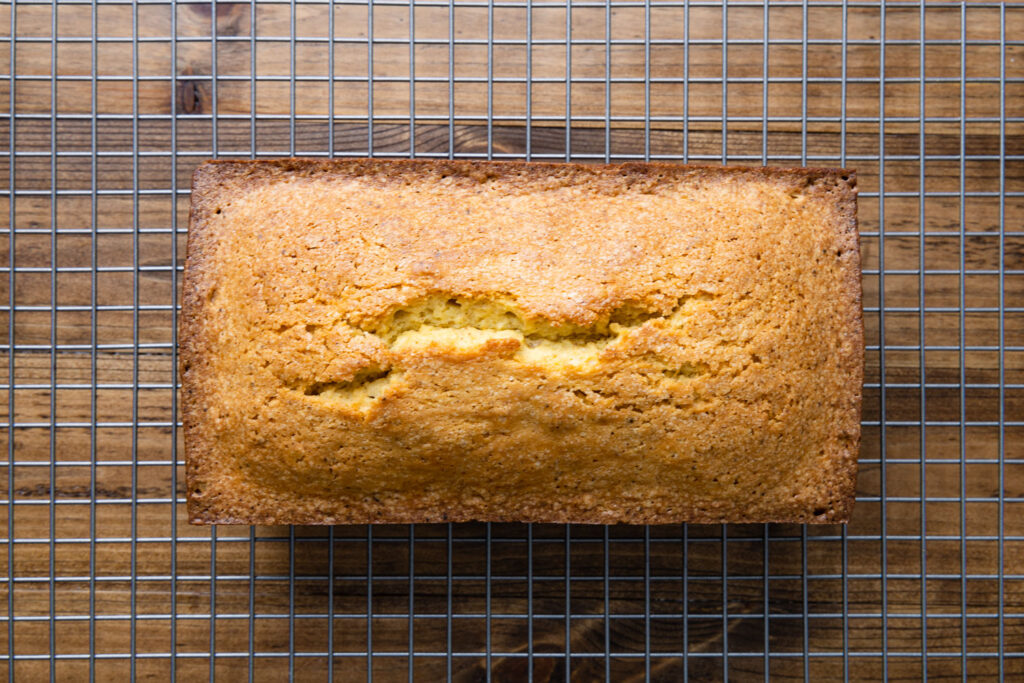
12. Serve:
Serve the cake on its own with a cup of coffee or tea, or alongside some berries, whipped cream, compote, jam, lemon curd, or crème anglaise.

If you enjoyed this recipe, please consider leaving a small tip with Buy Me a Coffee. These tips help cover the cost of hosting, ingredients, and, of course, the coffee that fuels my work.
Nutrition
Calories: 383kcal | Total Fat: 22.77g | Carbs: 40.67g | Sugars: 22.35g | Protein: 4.92g | Sodium: 217.14mg | Fiber: 0.4g
The calorie information provided for this recipe is an estimate. The accuracy of the calories listed is not guaranteed.

No Comments